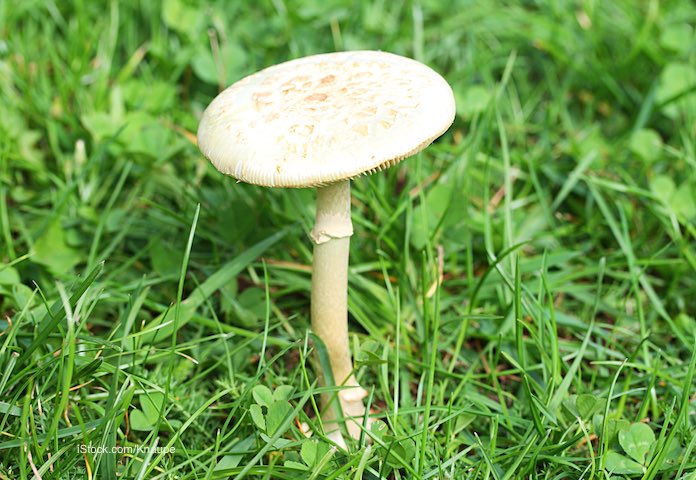
All of the patients in this outbreak had the symptoms of mushroom poisoning. Three of the patients had to have liver transplants. All of the patients have since recovered, although one child had permanent neurologic impairment.
The report recommends that all wild-picked mushrooms should be evaluated by a trained mycologist before they are eaten. Inexperienced foragers should be “strongly discouraged” from eating any wild mushrooms. And health care providers should be aware of the symptoms of illness caused by these toxins. The symptoms are the same as regular food poisoning, but they progress to potentially fatal hepatotoxicity.
Amanita phalloides is known as the “death cap.” There was an unusually large bloom of this mushroom in the Bay Area in November 2016. Five days after the Bay Area Mycological Society told the California Poison Control System (CPCS) about this bloom, CPCS received notification of the first poisoning of the season.
The patients ranged from single cases to household clusters. In one cluster, a woman prepared and grilled wild mushrooms for dinner. The mother, father, and child developed nausea, vomiting, and diarrhea about 9 hours after they ate the mushrooms. The parents recovered, but the child developed irreversible fulminant hepatic failure and needed mechanical ventilation because of hepatic encephalopathy. She underwent a liver transplant six days after eating the mushrooms.
This poisonous mushroom grows in a symbiotic relationship with coast live oak and other hardwood trees. They are very common in the early wet winter months, although the climate along the coast can support their growth throughout the year.
This fungi is responsible for most of the mushroom-related deaths worldwide. The toxin in the mushrooms, called amatoxins, cause cell injury by stopping protein synthesis. There is a “possible” antidote for this toxin that is available in Europe, but it is undergoing clinical trial in the United States at this time.





